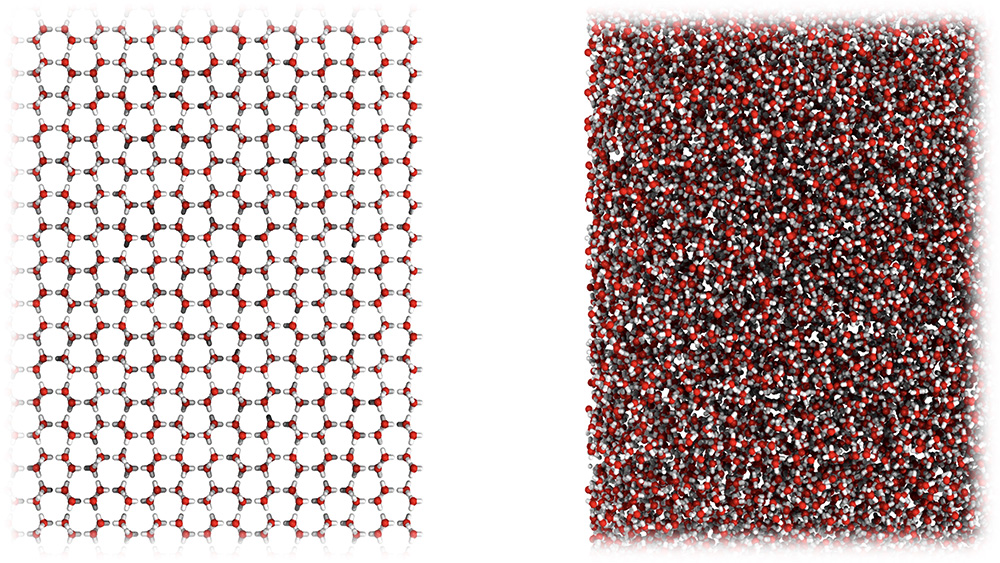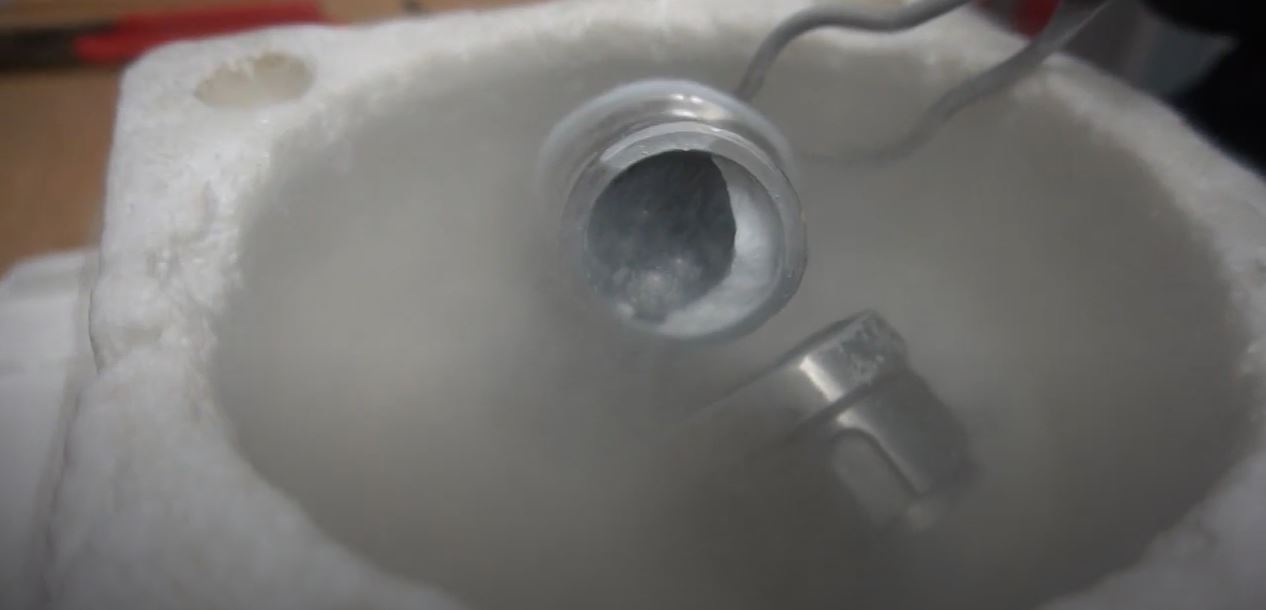
Researchers at University College London (UCL) and Cambridge have created a new form of ice that has properties that fundamentally change our understanding of the “solid” state of water.

The newly discovered ice is amorphous – that is, its molecules are in a disorganized form, and not neatly arranged, as in ordinary crystalline ice. Amorphous forms are usually found in space, because the space environment does not have enough thermal energy for the formation of crystals.
In the study, published in the journal Science, the team used a ball mill process – vigorously shaking regular ice together with steel balls in a jar cooled to -200 ° C. Instead of the expected small pieces of ice, scientists got a new amorphous form of ice — which, unlike other known types, had the same density as liquid water and at the same time looked like crushed ice.
In studying the technique, processes called ball milling, vigorously shaking ordinary ice together with steel balls in a jar cooled to -200 degrees Centigrade were used. “We shook the ice like crazy and destroyed the crystal structure,” said lead author Dr. Alexander Rosu-Finsen. 2/6 pic.twitter.com/4Dr2q9arKk
— UCL News (@uclnews) February 3, 2023
Course
EXCEL FOR BUSINESS
Master Excel in just 1.5 months and increase the efficiency of business processes in your company.
REGISTER!
Previous studies of the solid phase of water allowed scientists to discover more than 20 crystalline forms and two amorphous types of ice – high density (HDA) and low density (LDA). Scientists discovered LDA in the 1930s when they deposited water vapor on a steel sheet cooled to -100°C; 50 years later they discovered they could create HDA by compressing ice at temperatures of nearly -200°C.
The gap in the density of these two forms suggested that there must be a middle ground, and scientists from Cambridge and UCL managed to find it. They named the new ice medium density amorphous ice (MDA).

The difference in density has previously led scientists to suggest that water does exist as two liquids at very low temperatures, and that theoretically at a certain temperature the two liquids can coexist, with one type floating on top of the other (as in mixing oil and water). This hypothesis was demonstrated in computer simulations, but not confirmed by experiment. A new MDA study may cast doubt on the reality of this idea.
“We know of 20 crystalline forms of ice, and previously only two main amorphous types of ice have been identified, known as high-density amorphous ice and low-density amorphous ice. There is a huge gap in density between them, and the conventional wisdom was that no ice existed in this gap. Our study shows that the density of MDA lies precisely within this density gap, and this discovery could have far-reaching implications for our understanding of liquid water and many anomalies,” says the study’s senior author, Professor of Chemistry Christoph Salzmann.
Ball milling is a technique used in several industries to grind or blend materials, but has not previously been applied to ice. In the study, the jar was cooled to -200°C, and the density of crushed ice was determined by its buoyancy in liquid nitrogen. The researchers used a number of other techniques to analyze the structure and properties of MDA, including X-ray diffraction (observing X-rays reflected by the ice) and Raman spectroscopy (observing how the ice scatters light).

Using calorimetry, it was found that if MDA is compressed and then heated, it will release a large amount of energy during recrystallization. Therefore, such ice can be a high-energy geophysical material that can cause tectonic movements on icy objects in the Solar System (such as the moons of Jupiter and Saturn).
Freon-free and environmentally friendly. Scientists have developed an alternative cooling method – ionocaloric.
Source: UCL, Techspot




